RCA Vehicle Design Degree Show 2010 highlights

Marten Wallgren (Sweden)
The Grid is a concept for a car sharing system for 2025. The two-seater semi autonomously driven commuter car has the option for driving yourself or being driven. The vehicles within The Grid are covered with solar panels and together they create not only a grid for car sharing, but also an infrastructure for energy distribution.
The design was inspired by artist Eva Hild’s clay sculptures where holes and surfaces are connected in an endless transition exposing the chassis. When the commuter car is empty the cabin is thin for reduced wind resistance and little energy consumption. When a passenger embarks, the cabin folds down and creates the required seats. The size of the vehicles means that they can be stored like supermarket trolleys where the batteries are then connected for an even distribution of energy.
A driverless taxi, an eco car connected to an eco home, and a vehicle with a strong Finnish design identity were some of the highlights of the 2010 Royal College of Art Vehicle Design degree show. One of the hotbeds for recruiting talented emerging car designers – the alumni reads like a who’s who of the motoring industry – this year’s show felt uncharacteristically light on innovative thinking.
Swedish designer Marten Wallgren was deservedly awarded the prize for best design interpretation at the Pilkington Automotive Awards, which takes place alongside the show, for his 2025 commuter service concept. The Grid is an optional autonomously driven two-sears vehicle powered by solar panels that connects to other similar models on the road to create a community charging grid – a plug-and-go taxi rank of the future.
Wallgren told us: ‘I wanted to explore how autonomous car driving will change the architecture of the car.’ When empty and driven autonomously to pick up users the cabin is thin like an airfoil for minimum wind resistance and energy consumption. When a passenger embarks, the cabin folds down to create the required seats.
Judge and vehicle designer David Wilkie said: ‘The rational next step from today’s hi-tech intelligent driving and braking systems is the ability to remove the need for a driver. The Grid meets social and environmental needs by developing a solution for improved car sharing systems and energy efficiency whilst also meeting the tastes and preferences of consumers.’
The award for best use of glazing went to German designer David Seesing for his Symbiosis concept, a complex car made from a double layer of glazing designed to channel air flow through the vehicle to aid fuel efficiency and temperature control. Seesing worked alongside architecture firm Rogers Stirk Harbour in exploring how certain ways in which the profession has responded to sustainable building can assist vehicle design. He told us: ‘I tried to view vehicle design from an architect’s eyes, looking at how they create buildings and what technologies they integrate, and then try to apply that to my vehicle.’
The battery is a structural part of Symbiosis. ‘This is the heaviest part of the car so I placed it low to bring the centre of gravity down,’ he explained. ‘Right now the shape of the battery is limited (they are flat) but engineers are working to change the shape.’
Receive our daily digest of inspiration, escapism and design stories from around the world direct to your inbox.
His conceptual car interfaces with a building – for which Seesing sketched a prototype - using it to create internal airstreams that constantly pull air through the vehicle parked outside. Seesing said: ‘The building creates an artificial airstream using a chimney effect to naturally ventilate the living space. To connect both vehicle and building, the car is parked in the artificially created airstream and keeps generating energy when parked outside. This way the vehicle and building form a system with a constant energy flow between them.’
Miika Heikkinen’s Aava is a small fuel cell powered promotional vehicle designed for the hypothetical Helsinki Winter Olympics 2030. During the games, the car will offer tours around what the designer calls ‘real Finnish sights, not the artificial ones tourists see’ after which the vehicle would be turned into a micro rental system.
The Finnish designer told W*: ‘The concept’s ecological and pure materials have been chosen to reflect traditional Finnish design and heritage. The design is based on the forms of an abstract birch sculpture I did to represent Finnish nature. I chose fuel cell power because we have 180,000 lakes in Finland, so theoretically we can be oil independent. We can produce the hydrogen. The power source, gas and materials will be Finnish for a fully sustainable solution.’
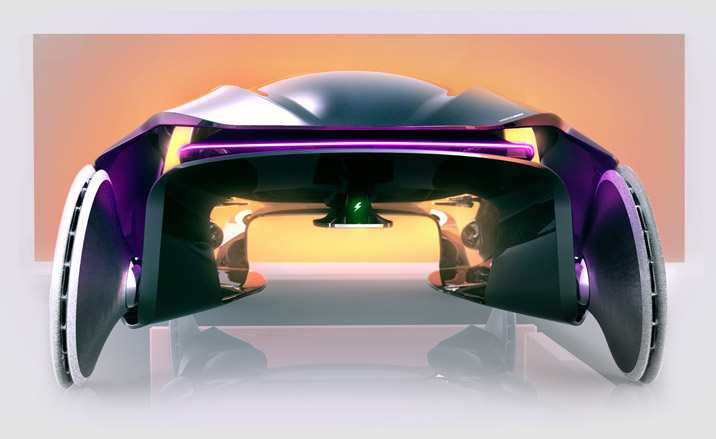
The Grid, by Marten Wallgren






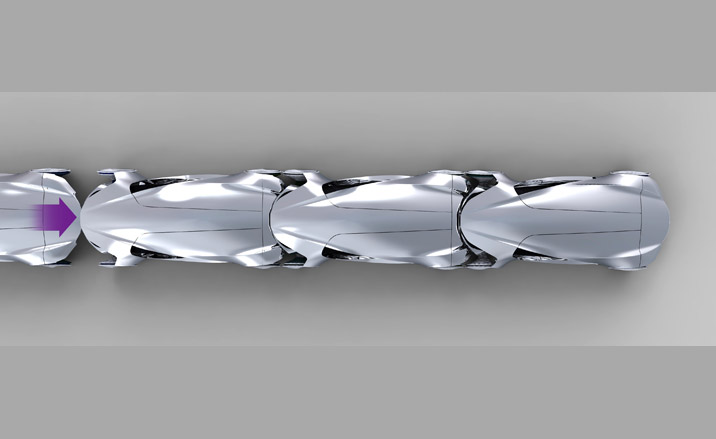
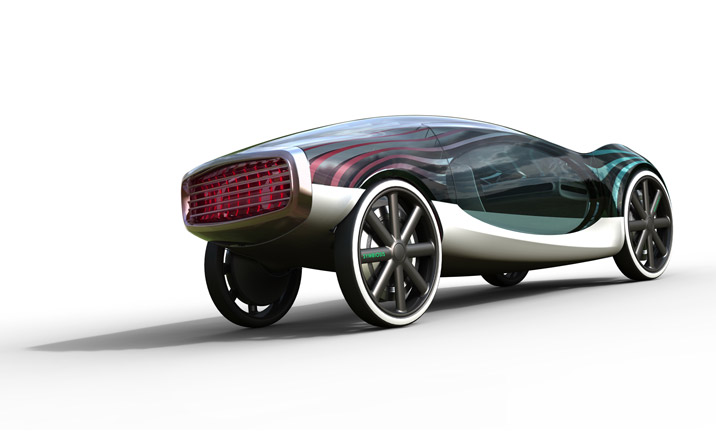
David Seesing (Germany)
Symbiosis explores the possibilities of connecting architecture and transportation to form an energy efficient living system. Inspired by architecture, the four-seater vehicle is restructured as a multilayered system consisting of three main parts: the interior cabin, supporting framework and the exterior skin. While piezoelectric crystals, integrated in the framework, create energy from airflow between the layers of the vehicle, the exterior skin of the car collects energy from sunlight.
Air intakes at the front and the rear automatically control the airflow through the car. This is used to cool the vehicle’s components or manipulate the air between the layers for thermal insulation to heat the interior by capturing heat from the battery and hub engines. The electric hub motors in all four wheels generate kinetic energy from suspending and breaking the car. The building creates an artificial airstream using a chimney effect to naturally ventilate the living space. To connect both vehicle and building, the car is parked in the artificially created airstream and keeps generating energy when parked outside. This way both vehicle and building form a system with a constant energy flow between them
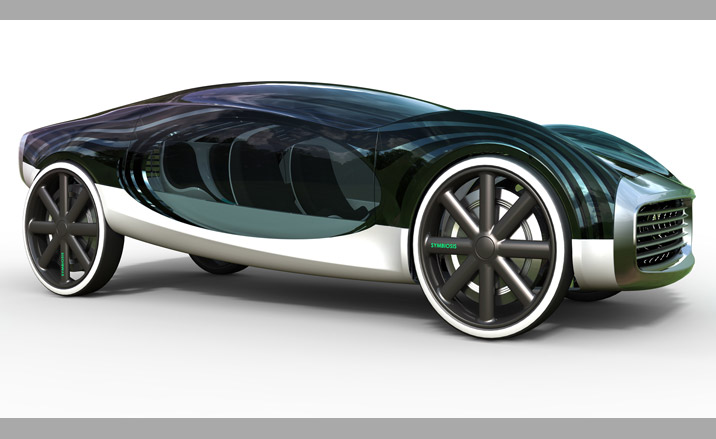
Symbiosis, by David Seesing
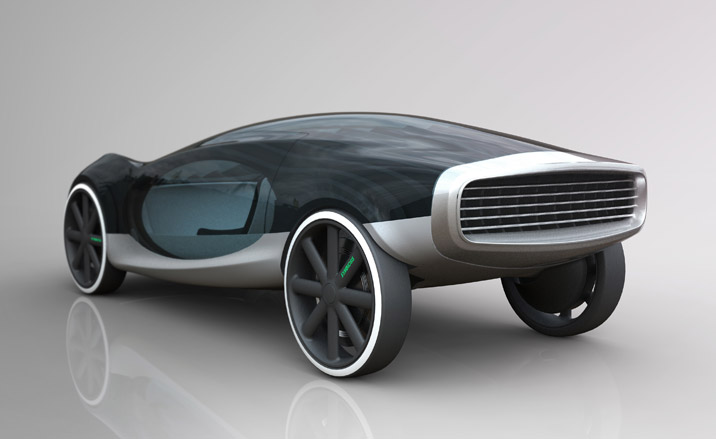
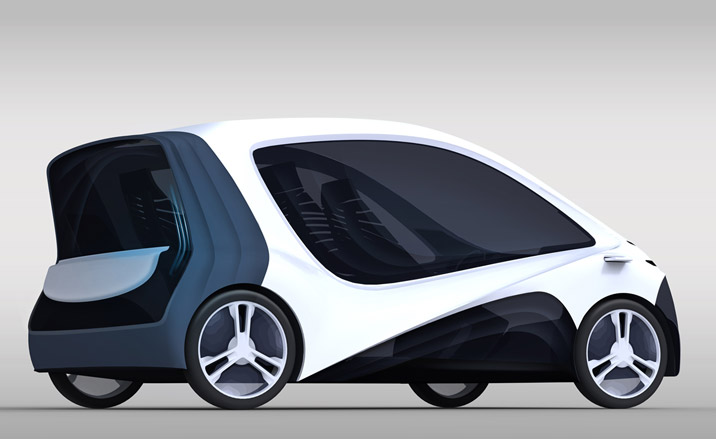
Miika Heikkinen (Finland)
Aava is a small fuel cell powered promotional vehicle designed for the Helsinki Winter Olympics 2030. During the games it will offer tours around Finnish sights, after which the vehicle will be turned into a micro rental system. The design is based on the forms of an abstract Birch sculpture intended to represent Finnish nature. The concept’s ecological and pure materials have been chosen to reflect traditional Finnish design and heritage.
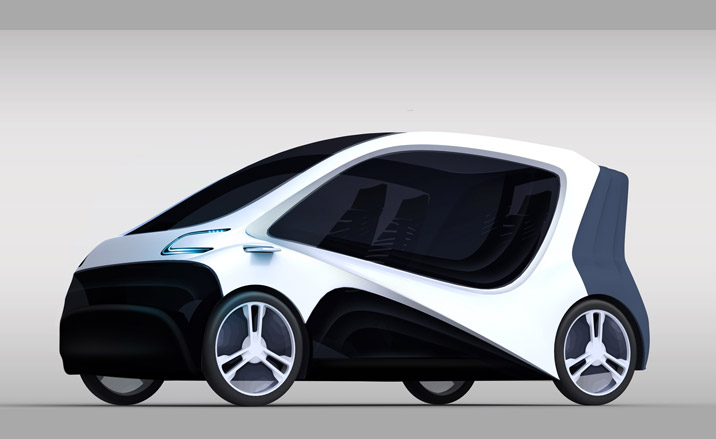
Aava, by Miika Heikkinen (Finland)

Bora Kim (Korea)
Jekyll and Hyde is a luxury electric vehicle for Bentley in the year 2035. Created at the marque’s Crewe headquarters, the car’s surface is covered in solar panels to collect energy, and wind power helps to circulate air within the car interior. The bullet shape at the rear has been designed for maximum aero-efficiency.
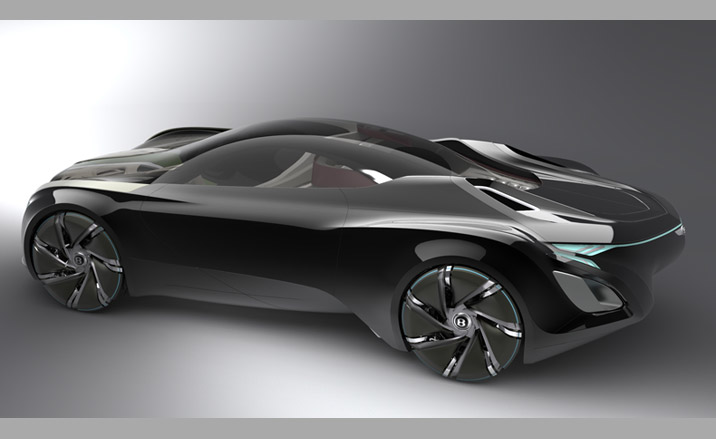
Jekyll and Hyde, by Bora Kim
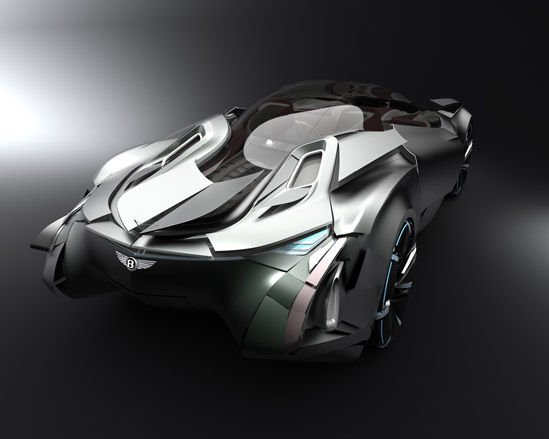
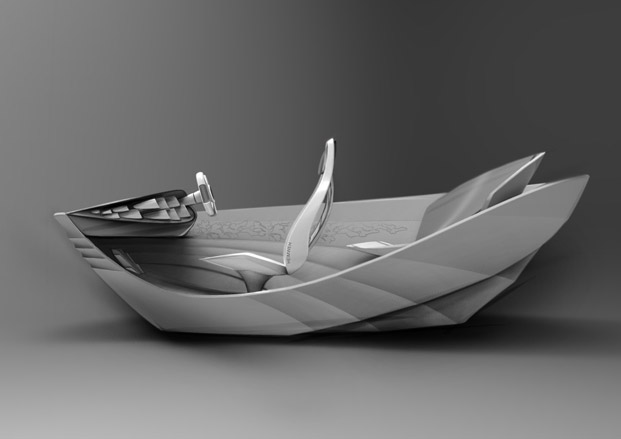
Stephanie Waser (Germany)
Heimweh is a modern luxury car interior inspired by Germany. All the materials and components have come from Germany - the seat cover is of deer leather filled with sheep wool, the seat structure is made out of plum wood, and door panels are ceramic structure with ornaments inspired by the traditional German cuckoo clock.
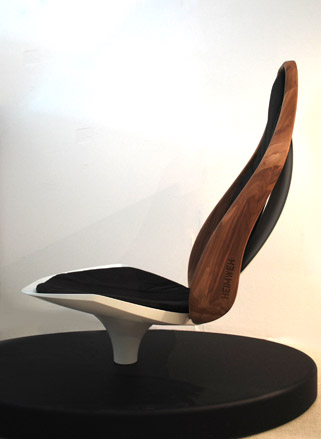
Seat from Heimweh by Stephanie Waser
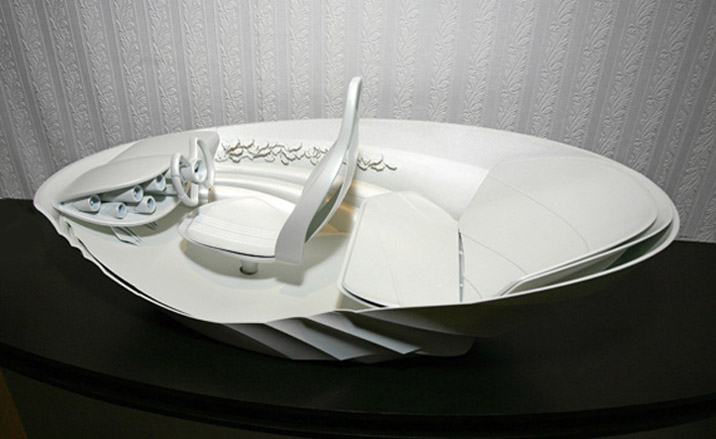
Scale model of Heimweh by Stephanie Waser
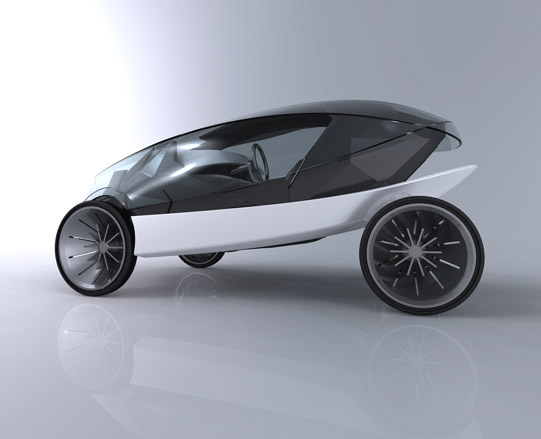
Philipp Siebourg (Germany)
The Suit is a vehicle that measures daily driving habits including the loaded weight of the car. A web-based user-profile helps drivers optimise their daily consumption so that they are financially rewarded for positive driving behaviour.

Jong Won Lee (Korea)
The Car of Light explores how light could become another important philosophical and aesthetic factor in car design, by using examples that show how it can be used in the interior and exterior. The designer explained: ’I wanted to investigate the relationship between light and cars and possible influences light can bring to a car.’

The Car of Light by Jong Won Lee

Hyun-Joon Park (Korea)
Marriage is a pair of vehicles that adapt to the needs of married couples in the year 2040
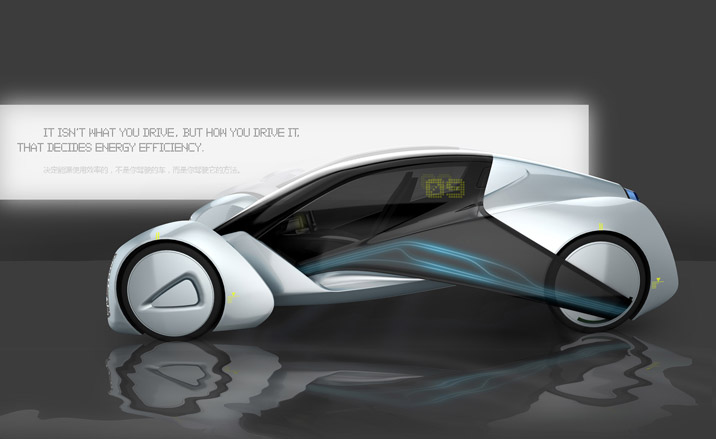
Rui Guo (China)
GlideX 2020 is an electric vehicle for the ordinary Chinese citizen. The idea is for the growing number of first car Chinese buyers to experience owning a sustainable car in an educational way with the car giving feedback while they are driving. ’It is a great opportunity to implant a brand-new sustainable car culture and driving mentality within the largest population group in the world and eventually, a sustainable driving mentality will start to emerge,’ said Guo.
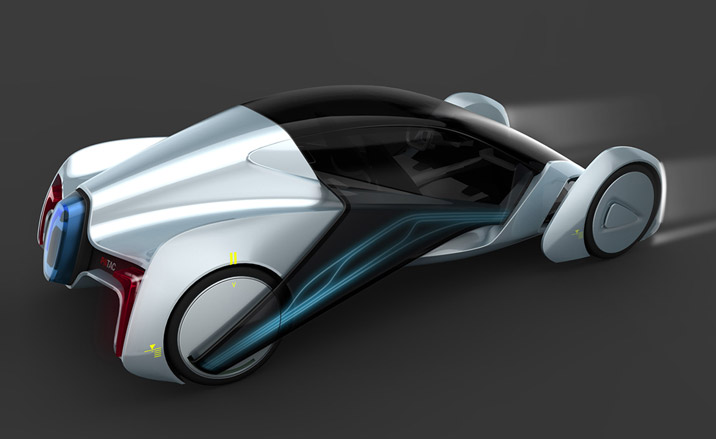
GlideX 2020 by Rui Guo
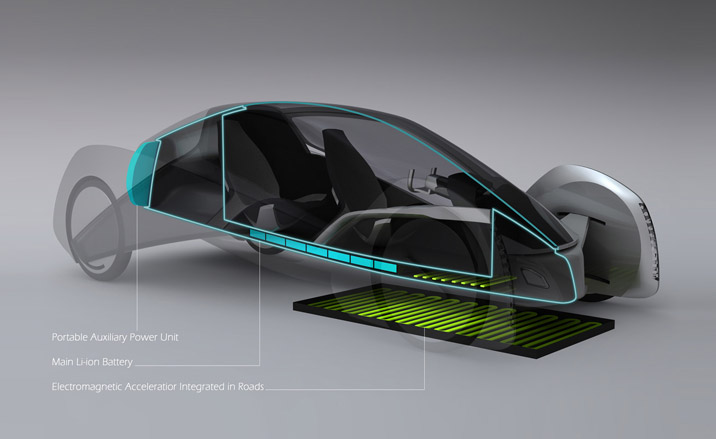

Gabriel Tam (Australia)
Peregrinate is a chauffeur driven concept car designed for boutique hotel customers. Its focus is to maximise the overall comfort and experience for the passengers.
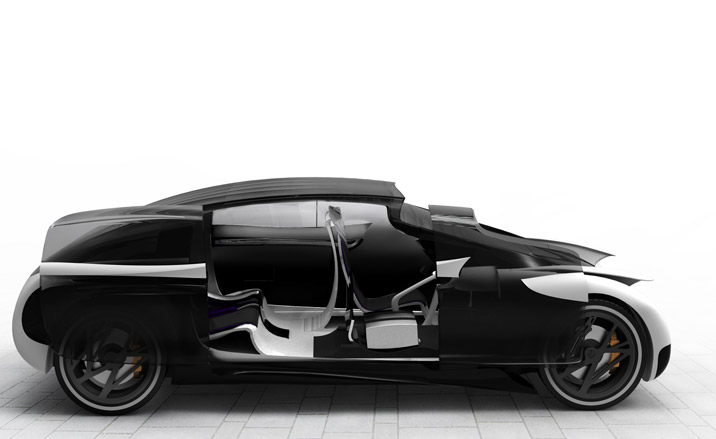
Peregrinate by Gabriel Tam
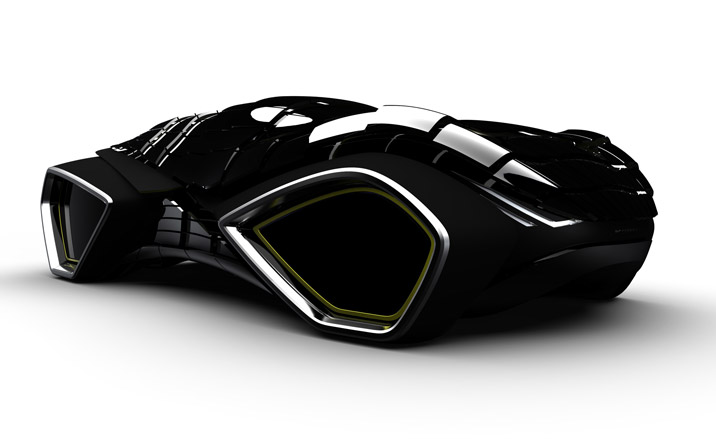
Niki Merriman (Great Britain)
Expression aims to introduce expressive body language through clever surfacing. Each of the small individual body panels on the surface have the ability to move independently so that the user can show his or her emotions through forms expressed on the exterior of the car.
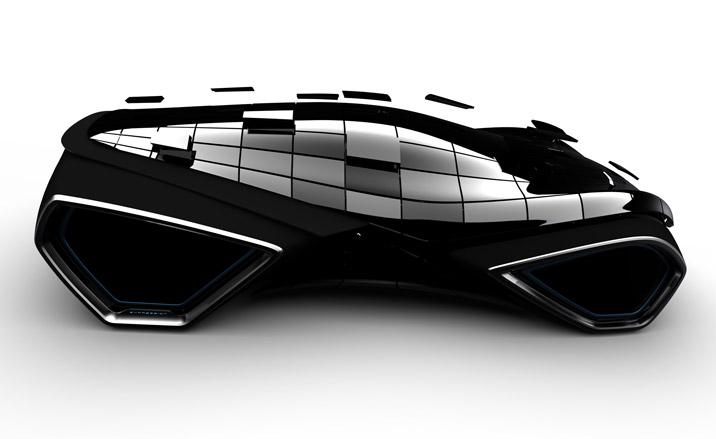
Expression by Niki Merriman
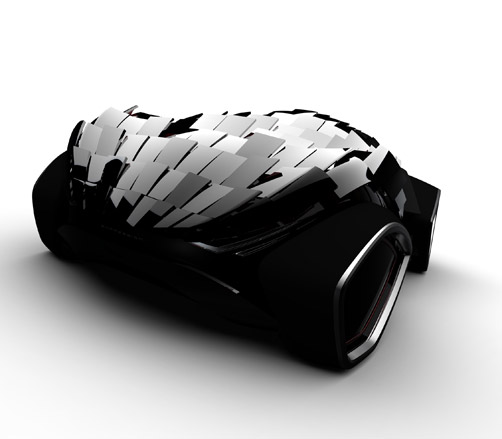

Dalibor Pantucek (Czech Republic)
The eco Skoda Rapid (sponsored by the Czech firm) has a lightweight and aerodynamic frame that can change proportions according to the type of journey from highway to the city. The interior is designed from layers of surfaces with shape memory so that when the car is not in use, the interior can be used as a lounge area

Skoda Rapid by Dalibor Pantucek
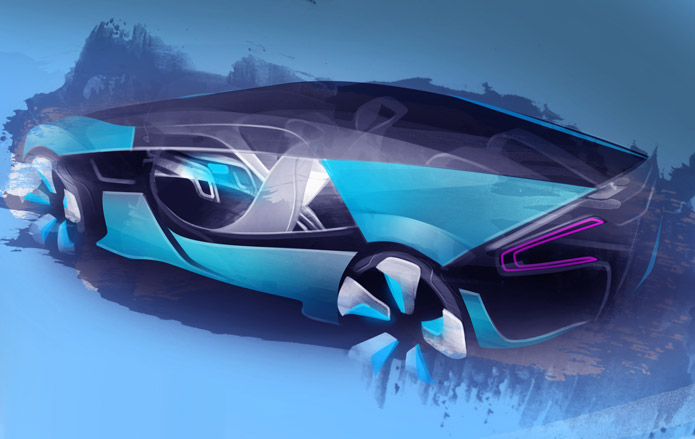
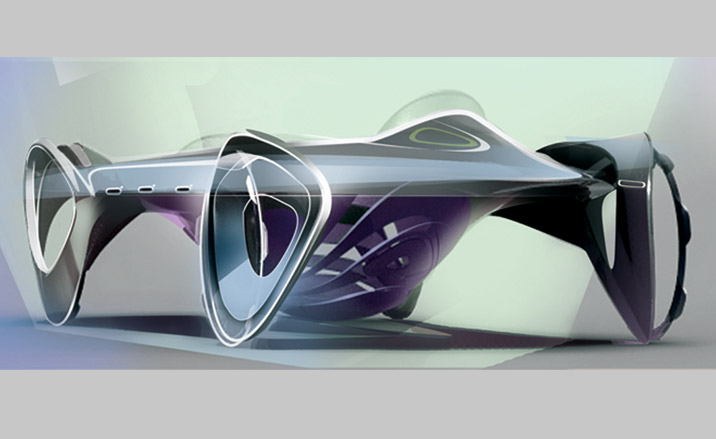
Anand Krishnan
ThinQ is a future electric vehicle that utilises wafer thin battery technology, developed by Imperial College London, embedded in the skin of the vehicle. The project experiments in decoding the aesthetic for the new powertrains to come.
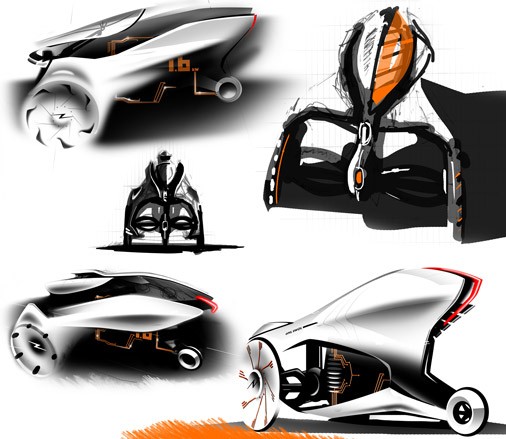
Augustin Barbot (France)
Energy Way Of Life is a self-sufficient concept car. The lightweight three-wheeled vehicle develops 2kW provided by the vehicle and the driver through a special suit, which stores energy during the day and transfers it to the vehicle when driving.
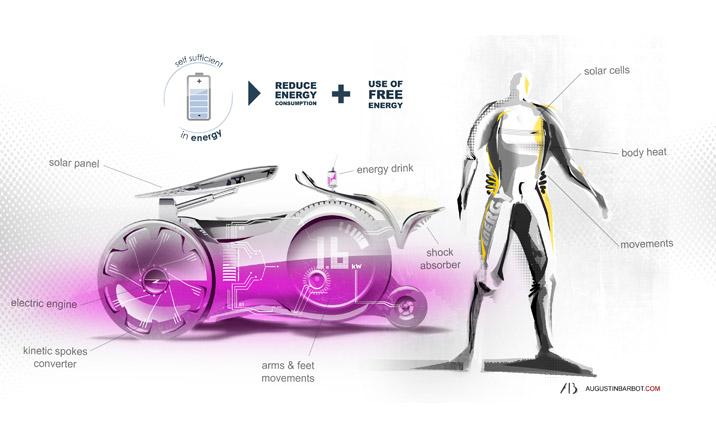
Energy Way Of Life by Augustin Barbot
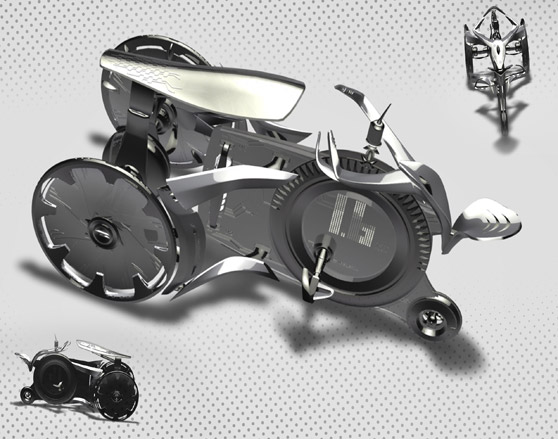
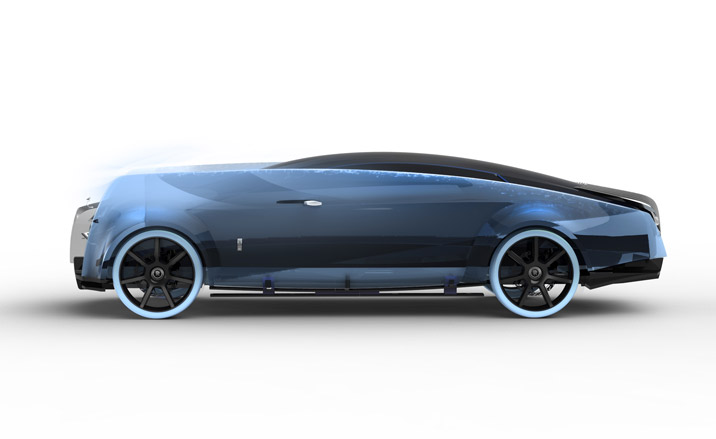
Young-Seong Kim (Korea)
Celestial Cloud is concept for a future eco-friendly luxury car - Kim had a future Rolls-Royce in mind. Inspiration for the design is a cloud floating inside a clear box, giving the passenger a feeling that they are hovering above the ground.
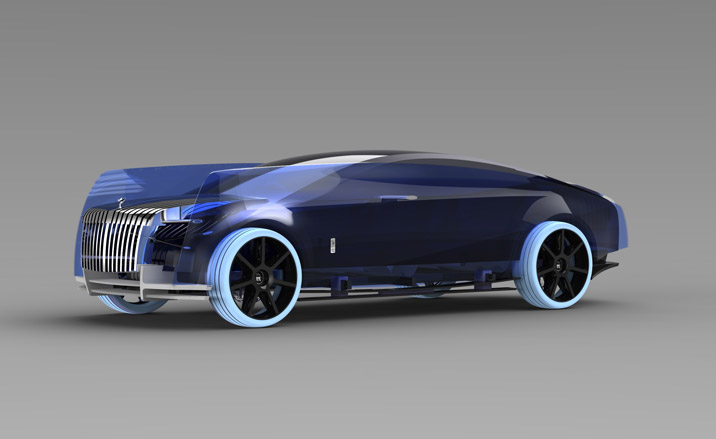
A writer and editor based in London, Nargess contributes to various international publications on all aspects of culture. She is editorial director on Voices, a US publication on wine, and has authored a few lifestyle books, including The Life Negroni.
-
 We asked six creative leaders to tell us their design predictions for the year ahead
We asked six creative leaders to tell us their design predictions for the year aheadWhat will be the trends shaping the design world in 2026? Six creative leaders share their creative predictions for next year, alongside some wise advice: be present, connect, embrace AI
-
 10 watch and jewellery moments that dazzled us in 2025
10 watch and jewellery moments that dazzled us in 2025From unexpected watch collaborations to eclectic materials and offbeat designs, here are the watch and jewellery moments we enjoyed this year
-
 Patricia Urquiola reveals an imaginative inner world in ‘Meta-Morphosa’
Patricia Urquiola reveals an imaginative inner world in ‘Meta-Morphosa’From hybrid creatures and marine motifs to experimental materials and textiles, Meta-Morphosa presents a concentrated view of Patricia Urquiola’s recent work